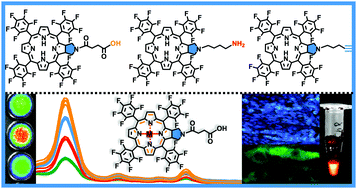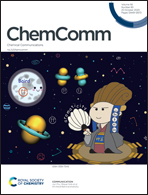Leveraging synthetic chlorins for bio-imaging applications†
Abstract
Synthetic chlorins are not only fluorescent, the modulation of the tetrapyrrole system can also chelate metal ions. Conjugation of linkers at their pyrrolidines allows for conjugation to bio-molecules to create target specificity. By altering these chemo-photophysical properties, this work facilitates the use of chlorins in fluorescent imaging and positron emission tomography (PET).



 Please wait while we load your content...
Please wait while we load your content...